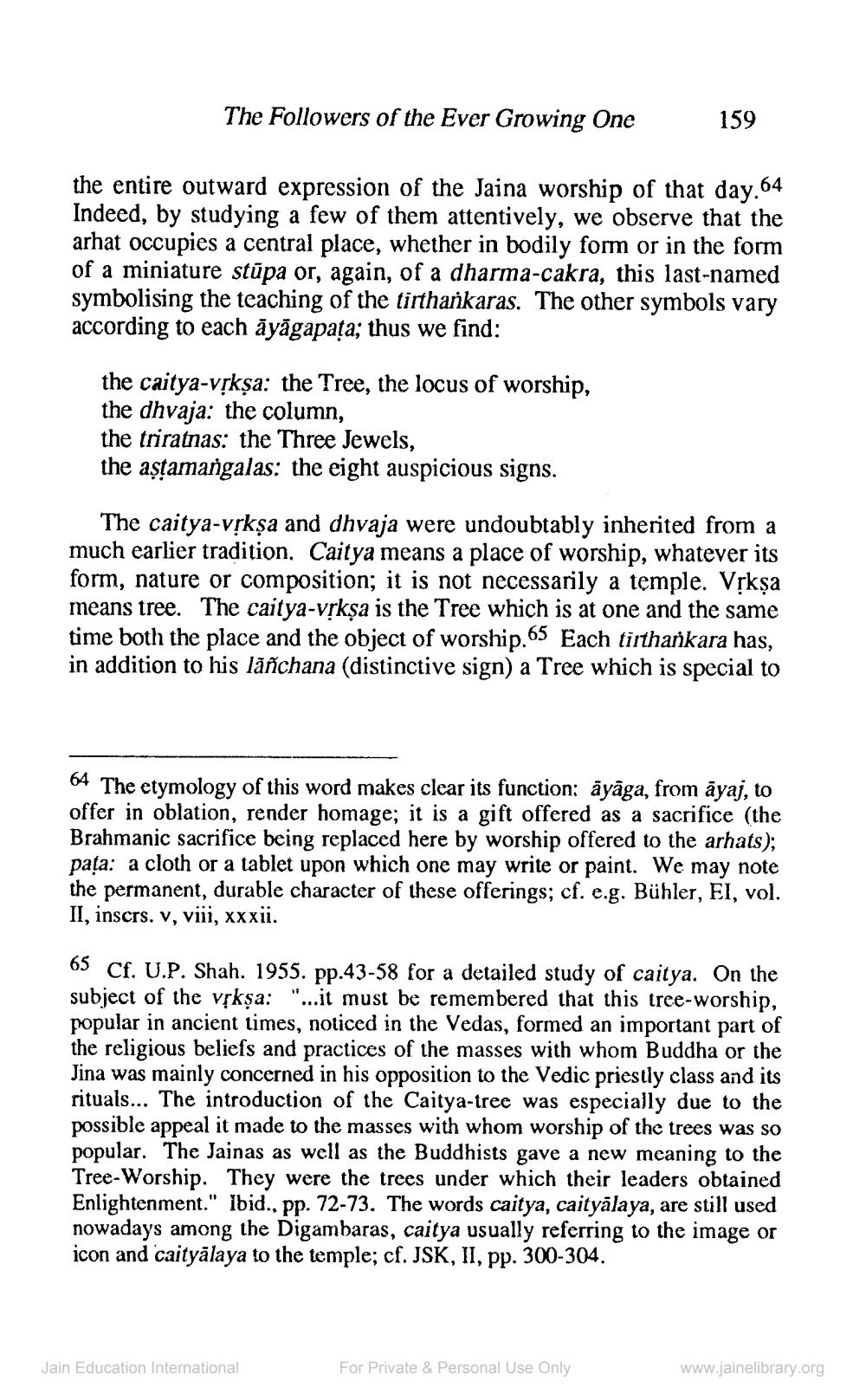________________
The Followers of the Ever Growing One
159
the entire outward expression of the Jaina worship of that day. 64 Indeed, by studying a few of them attentively, we observe that the arhat occupies a central place, whether in bodily form or in the form of a miniature stūpa or, again, of a dharma-cakra, this last-named symbolising the teaching of the tirtharikaras. The other symbols vary according to each āyāgapata; thus we find:
the caitya-vskşa: the Tree, the locus of worship, the dhvaja: the column, the triratnas: the Three Jewels, the aştamangalas: the eight auspicious signs.
The caitya-vrkșa and dhvaja were undoubtably inherited from a much earlier tradition. Caitya means a place of worship, whatever its form, nature or composition; it is not necessarily a temple. Vļkșa means tree. The caitya-vrkṣa is the Tree which is at one and the same time both the place and the object of worship.65 Each tirthankara has, in addition to his lāñchana (distinctive sign) a Tree which is special to
64 The etymology of this word makes clear its function: āyāga, from āyaj, to offer in oblation, render homage; it is a gift offered as a sacrifice (the Brahmanic sacrifice being replaced here by worship offered to the arhats); pața: a cloth or a tablet upon which one may write or paint. We may note the permanent, durable character of these offerings; cf. e.g. Bühler, El, vol. II, inscrs. V, viji, xxxii.
65 Cf. U.P. Shah. 1955. pp.43-58 for a detailed study of caitya. On the subject of the vşkşa: "...it must be remembered that this tree-worship, popular in ancient times, noticed in the Vedas, formed an important part of the religious beliefs and practices of the masses with whom Buddha or the Jina was mainly concerned in his opposition to the Vedic priestly class and its rituals... The introduction of the Caitya-tree was especially due to the possible appeal it made to the masses with whom worship of the trees was so popular. The Jajnas as well as the Buddhists gave a new meaning to the Tree-Worship. They were the trees under which their leaders obtained Enlightenment." Ibid., pp. 72-73. The words caitya, caityalaya, are still used nowadays among the Digambaras, caitya usually referring to the image or icon and caityalaya to the temple; cf. JSK, II, pp. 300-304.
Jain Education International
For Private & Personal Use Only
www.jainelibrary.org




